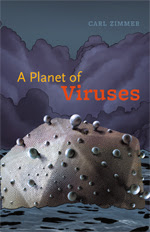Fungi are curious organisms, neither animal nor plant, with unique chemical traits such as the presence of chitin in the wall of their cells. My beloved Brock Biology of Microorganims reminds me that there are three major groups of fungi: the molds (the type you don't want in your household); the yeasts, which we commonly use to ferment sugars; and finally the mushrooms, or macroscopic fungi.
Maintained by Robin Tecon. This blog is about bacteria (and other microbes) and the scientists who study them.
Wednesday, December 26, 2012
Macroscopic fungi
Fungi are curious organisms, neither animal nor plant, with unique chemical traits such as the presence of chitin in the wall of their cells. My beloved Brock Biology of Microorganims reminds me that there are three major groups of fungi: the molds (the type you don't want in your household); the yeasts, which we commonly use to ferment sugars; and finally the mushrooms, or macroscopic fungi.
Tuesday, December 18, 2012
Scientists keep an eye on a new SARS-like virus
 |
| Coronavirus. Electron microscope photo by Phil Murphy/CDC. |
This year, a SARS-like virus has appeared in Middle East, and scientists and health officers keep a very close eye on it, as Nature News reports. At present it remains unclear whether this new virus could become a real worldwide threat, but it killed five of the nine cases known so far.
The first cases were reported this Summer in Saudi Arabia and in Qatar, but in November evidence showed that people had been infected by the new virus in Jordan already this Spring.
Tuesday, December 11, 2012
A Planet of Viruses by Carl Zimmer
 |
| Published by University of Chicago Press |
This is popular science writing at its best: concise,
edifying and not condescending. But I did not expect less from Carl Zimmer,
a seasoned science writer and the author of many books (e.g. Microcosm, Soul Made Flesh,
Evolution:Making Sense of Life), as well as a contributor to many high profiles newspapers and
magazines (e. g. NYT, Time, Scientific American). On top of that he's a widely read blogger (The Loom).
You can tell that it is good when you would recommend the book to
a non-scientist, and at the same time you find plenty in the book to
enjoy for yourself.
A Planet of Viruses
is a short book, so don’t expect an exhaustive treatise on viruses. But if the
scope is narrow, it is due to clever choices that help keep the book
focused. For instance, Zimmer doesn’t
discuss the molecular details so much. We won’t learn here about RNA vs. DNA
viruses, single vs. double stranded, and so forth. Neither will we learn the
elaborated tricks of viral replication or the taxonomy of viruses – but
textbooks are just for that, aren’t they?
Subscribe to:
Posts (Atom)